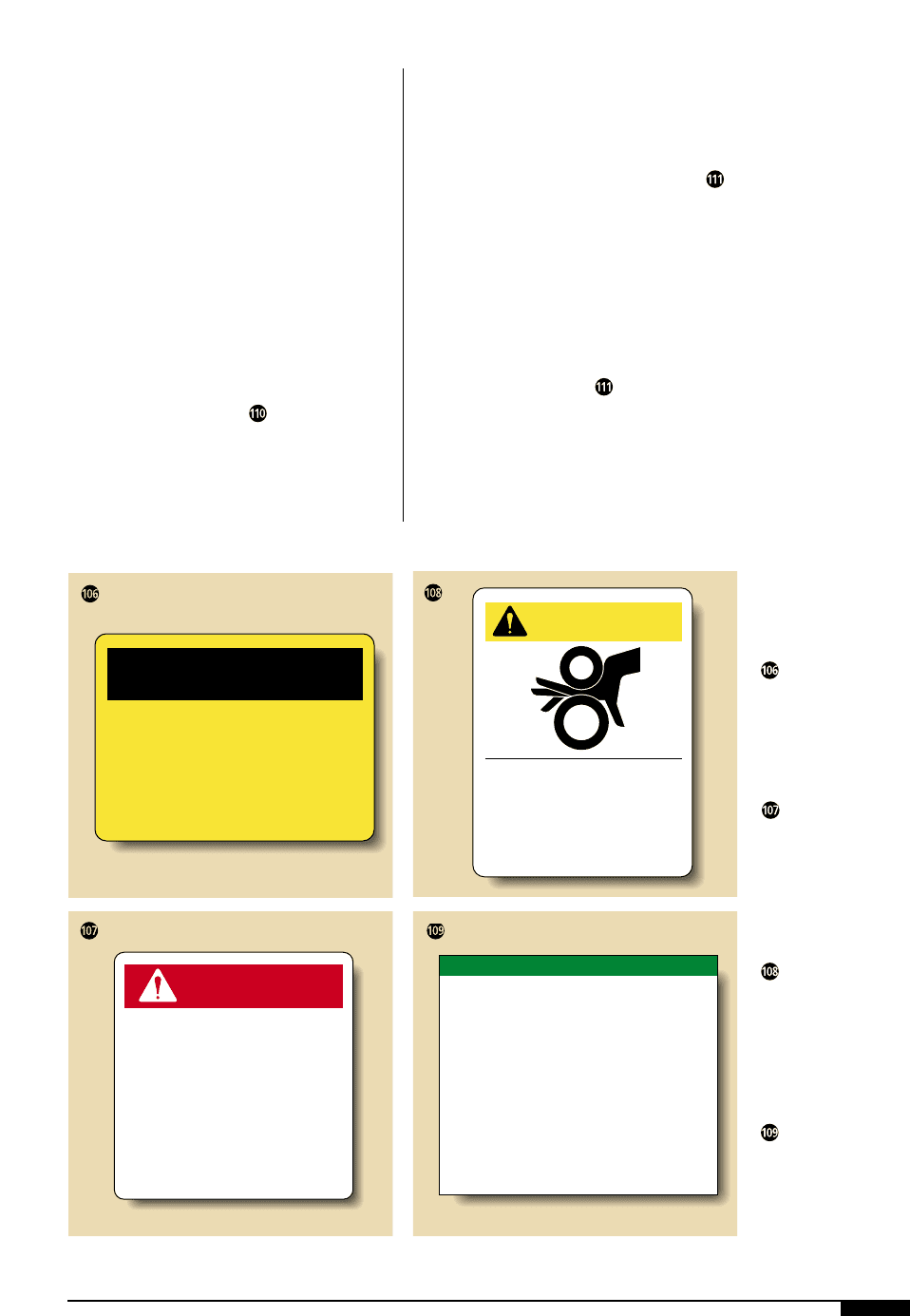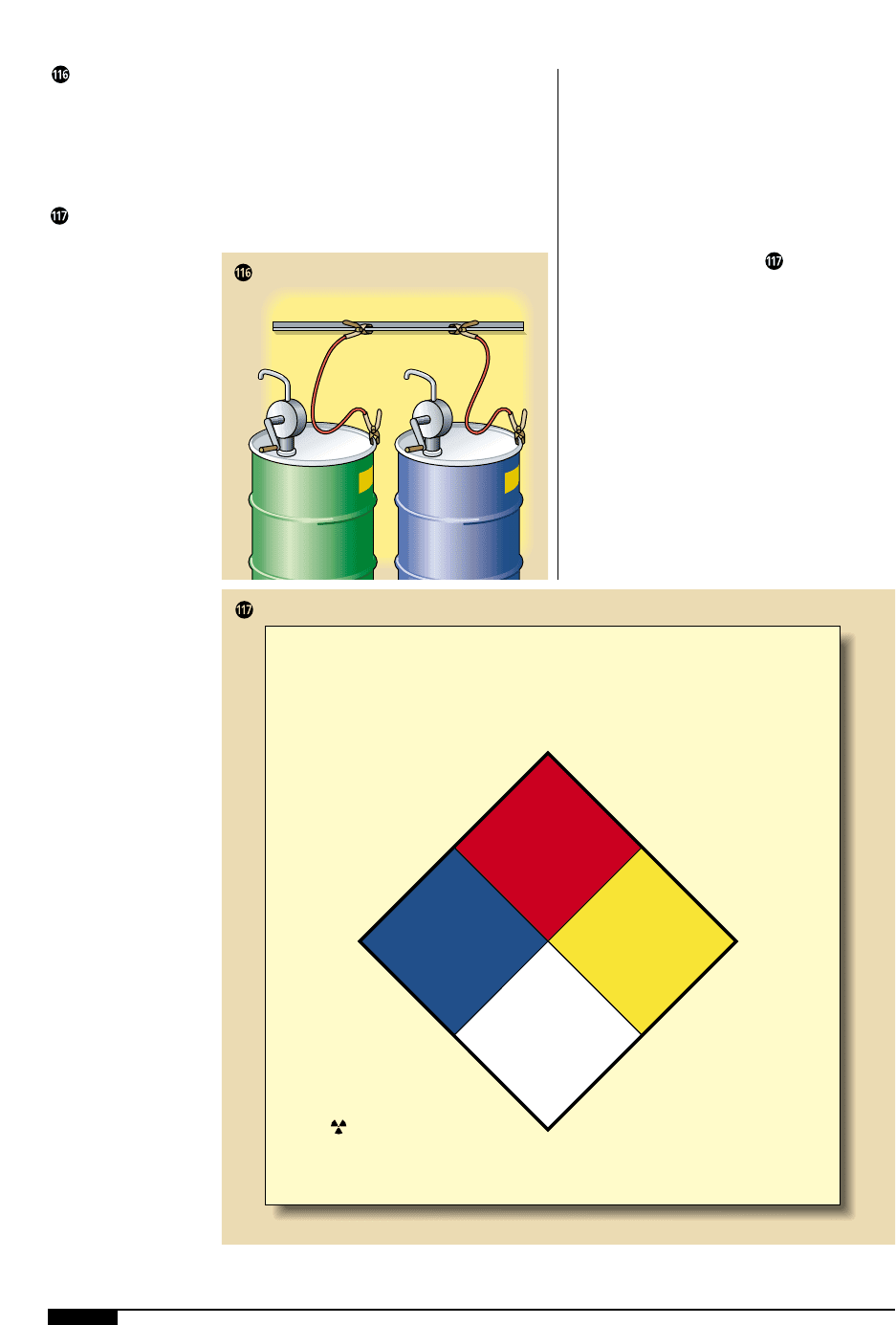FTA (изд-во). Flexography: Principles And Practices. Vol.1-6
Подождите немного. Документ загружается.


CHAPTER 2
Pressroom Practices
ON
OFF
DO NOT
OPERATE
N
a
m
e
D
e
p
t
.
E
x
p
e
c
t
e
d
C
o
m
p
l
e
t
i
o
n
T
h
i
s
l
o
c
k
/
t
a
g
m
a
y
o
n
l
y
b
e
r
e
m
o
v
e
d
b
y
:

166 FLEXOGRAPHY: PRINCIPLES & PRACTICES
ACKNOWLEDGEMENTS
Author/Editor: Jim Reinke, Fox Valley Technical College
Contributors: Steve Utschig, Fox Valley Technical College
Mark Keller, Fox Valley Technical College
A special thanks to all individuals involved in the writing and editing of the
FFTA FlexSys Training Manuals, which were used as a resource for this volume.

PRESSROOM PRACTICES 167
I
n any flexographic printing plant, big or
small, whether it is corrugated, tag and
label, or wide-web packaging, the print-
ing press is the key element in the graph-
ic reproduction process. The pressroom
is where all the planning and elements
of the flexographic process come together to
ensure that the customer’s requirements are
met, and success is achieved for the customer
as well as the printer.
Success in the pressroom can only be
achieved when pressroom personnel under-
stand basic flexographic principles and
practices and apply them to every customer
request.
Because of the scope of the flexographic
printing industry, it is not practical to explain
all the procedures used in every printing and
converting plant in the industry. This volume
will discuss generic procedures for press-
room personnel involved in narrow-web,
wide-web and corrugated flexographic print-
ing, as well as common principles that can be
used in every segment of the flexo process.
Introduction

P
ersonal and pressroom safety
issues are critical concerns for
every flexographic printing com-
pany and for each individual.
Printing presses have numerous
pinch points that will cause seri-
ous injury. Every person involved in a printing
department must be concerned with personal
safety and the well-being of the environment.
As is true with any discussion of safety, the
intent is not to interfere with the work envi-
ronment or the company procedures that
have been tailored to meet specific work
requirements. The guidelines that have been
set up by the management and supervisory
personnel to maintain a safe workplace must
be followed to prevent injury to individuals.
PROPER DRESS
Proper dress is vitally important at the
work site. Personal safety begins with the
following basic rules:
• Clothing must be relatively tight-fitting.
Short sleeves and regular work pants
are appropriate. Loose clothing could
catch on moving parts.
• Steel-toed shoes help prevent foot
injury. For extra safety protection,
clamp-on steel boots can be worn. Steel
clamps afford better protection than
steel-toed shoes alone.
• Jewelry such as rings, watches, chains
or long earrings should never be worn
around machinery since they can easily
get caught in moving parts.
• Long hair must be tied back or con-
tained in a hair net so it doesn’t become
entangled in moving parts.
• Eye protection must be worn during
cleanup to prevent ink or wash-up sol-
vent from being splashed into the eyes.
Personal eye glasses must meet the
standards for safety glasses. Many reg-
ular glasses do not.
• Ear plugs or protectors should be worn
to minimize noise exposure.
• Tight-fitting protective gloves should be
worn during ink wash-ups to prevent
skin contact.
COMMON SENSE
Common sense is an important part of
overall safety. This concept is difficult to
explain or teach, yet comes very much into
play when working around the press. Some
examples of common sense include:
• Keeping hands away from moving parts.
• Familiarization of all pinch points bet-
ween various rolls. A pinch point is re-
ferred to as a nip and is created by the
direction that each roll turns. Use extra
caution when working near these areas
since rags, clothing and fingers can eas-
ily be drawn between these rolls and
into the nips;
• Using proper lifting techniques (back
straight and knees bent) as shown in
Figure .
• Folding rags neatly during wash-ups to
prevent corners from getting caught in
PRESSROOM PRACTICES 169
Personal and
Pressroom Safety

170 FLEXOGRAPHY: PRINCIPLES & PRACTICES
machinery parts (Figure ).
• Noting an excessive solvent smell,
which may indicate faulty or insufficient
ventilation.
• Asking questions about equipment or
procedures when points are not clearly
understood. It is easier to answer a
question than it is to fix a mistake.
• Not smoking on the job. Smoking is an
extreme fire hazard and will not be tol-
erated on the work floor and, in many
cases, on company premises.
• Insuring flammable materials are not
close by when operating an electrical
hand tool. Flammable gases or liquids
are easily ignitable.
• Insuring careful handling of metal-to-
metal tasks. A small spark may start a
fire or cause an explosion.
• Grounding all presses properly.
When using solvents around the press, UL-
approved containers should be used and
grounded to the press. Alligator-type clips
should be clamped to the container and to
an unpainted metal part of the press.
SAFETY SIGNAGE
A press can be very dangerous if handled
improperly. Operators and service personnel
must obey all caution signs and safety
instructions. If not, severe injuries and pos-
sibly death, could result.
There are rules to be followed and signs to
be aware of on the shop floor. The most
important rule on the floor is: Do not run any
of the press sections with their safety guards
removed.
There are many signs used in the industry
that represent different dangers. The Occu-
pational Safety and Health Administration
(OSHA) regulates signs that are applied to
equipment to warn of any physical dangers.
Signs and colors are used on machines to
point out possible dangers. These labels are
used to give personnel a continual mental
reminder that a danger is present. Although
these labels differ from industry to industry,
they all have four general headings:
Caution signs. Yellow, black and white signs
indicate a possible danger area or condition
that could cause personal injury (Figure ).
Danger signs. Red, black and white signs
indicate a possible “condition” that could
cause personal injury or damage to the
equipment (Figure ).
Warning signs. Orange, black and white signs
indicate a possible danger area or condition
that could cause personal injury, such as a
nip area (Figure ).
Note signs. Green and white signs indicate
parts or situations needing special attention
and/or an explanation (Figure ).
Proper lifting technique
allows the weight to be
absorbed by the legs –
not the back and knees.
Rag corners should
be tucked in to prevent
them from becoming
caught in the
machinery.

EMERGENCY EQUIPMENT
Personal safety goes hand in hand with a
good knowledge of the printing press and
department. A safety-first approach to the
press and surrounding area is essential at
all times.
Personnel working in the pressroom must
know the location of safety and emergency
equipment in the pressroom such as emer-
gency stops, lockout switches, personal
emergency equipment and fire extinguishers.
Emergency Stops. Emergency stop buttons
will bring the press to a quick, though not an
immediate stop (Figure ). Emergency life
lines are cords that can be pulled to bring the
press to a quick stop.
These safety features are located in vari-
ous convenient places on the press to be eas-
ily reached by operators. Emergency stops
should only be used in emergency situations
when the press must be stopped quickly.
Lockout Switch. A lockout switch prevents the
machine from being turned on (Figure ).
It cuts the power to all of the switches on the
press, thus eliminating an unwanted starting
of the machine. A lockout switch is used
when the press is being cleaned or is down
for simple maintenance. Examples of simple
maintenance include such things as making
simple adjustments or fixing paper jams. The
device shown in Figure locks the power
off when the button is pushed in. It remains
off until the operator resets the switch by
pulling it back out.
OSHA requires that equipment be locked-
out during repair or service and under cer-
PRESSROOM PRACTICES 171
Caution signs, yellow,
black and white in
color, indicate a
possible danger area
or condition that could
cause personal injury.
A red, black and
white sign indicates a
possible dangerous
condition that could
cause personal injury
or damage to the
equipment.
An orange, black and
white warning sign
indicates a possible
danger area, such as a
nip area, or condition
that could cause
personal injury.
A typcial notice sign,
green and white in
color, indicates parts or
situations needing
special attention and/or
an explanation.
Hazardous voltage!
Will shock, burn, or cause
death.
DO NOT work in this
enclosure unless familiar
with these electrical
circuits and safe servicing
procedures.
DANGER
To prevent serious injuries:
• DO NOT put hands
near rotating rolls.
• Only operate machine
with guard in place
over hold down roll.
WARNING
OPERATING SAFETY INSTRUCTIONS
REQUIREMENTS FOR RE-CERTIFYING
AS AN EXPLOSION PROOF PRESS
1. Reconnect power wire W213 to the control instruments cabinet
and re-calibrate the LFL monitor in accordance with
manufacturer’s instructions.
2. Remove blue jumper wire on the purge pressure switch terminal
block, terminals 212 to 351.
3. Remove the two AFIs from the main Allen Bradley PLC5
program in rungs 36:71 to 36:73. These rungs are for the alarm
message.
4. Remove blue jumper wire on lower console front from terminal
213 to terminal 969. Re-install W969 into the 969 terminal.
5. Verify that all intrinsic barriers are connected and that no jumper
wires exist.
SAFETY GLASSES
MUST BE WORN
AT ALL TIMES
CAUTION

172 FLEXOGRAPHY: PRINCIPLES & PRACTICES
The emergency
stop button brings
machinery to a quick
but not immediate stop
during emergency
situations.
Lockout switches
prevent machinery from
being turned on, espe-
cially during cleanup or
maintenance.
The machine is under
“tag-out,” which means
it is down for repair or
service and should not
be turned on.
A typical tag that could
be attached to a lock-
out device, identifies
the lockout status of
the equipment.
Eye-wash stations
should be easily
accessible in the
press area during
emergencies.
Fire extinguisher
classifications
indicate the type of
fire extinguisher
needed to put out a
fire.
6
5
4
1
2
3
P
S
I
0
4
0
0
8
0
0
1
2
0
0
1
6
0
0
2
0
0
0
P
S
I
0
4
0
0
8
0
0
1
2
0
0
1
6
0
0
2
0
0
0
P
S
I
0
4
0
0
8
0
0
1
2
0
0
1
6
0
0
2
0
0
0
P
S
I
0
4
0
0
8
0
0
1
2
0
0
1
6
0
0
2
0
0
0
ON
OFF
D
O
N
O
T
O
P
E
R
A
T
E
N
a
m
e
D
e
p
t
.
E
x
p
e
c
t
e
d
C
o
m
p
l
e
t
i
o
n
This lock/tag may
only be removed by:
Lock-Out
Switch
DO NOT
OPERATE
Name
Dept.
Expected Completion
This lock/tag may
only be removed by:
Letter
Symbol Types of Fires
Picture
Symbol
For wood, paper,
cloth, trash, and other
ordinary materials.
For gasoline, grease,
oil, paint, and other
flammable liquids.
For live electrical
equipment.

tain other conditions. Generally in these
cases a padlock or other locking device is
utilized over the main power switch or plug.
Tag-out. Tag-out is a safety procedure, used in
conjunction with the lockout device, to alert
everyone that the tagged machine is down for
repair or service; and that under no circum-
stance should the power be turned back on
(Figure ). A lock/tag is attached to the lock-
out device (Figure ).
This tagging procedure brings attention to
the reason that the machine or tool has been
locked-out. If a lock/tag is hanging on a
machine, instructions must be carefully fol-
lowed. Figure illustrates one of the many
phrases used on lock/tags to identify the
lockout status of the equipment. Other phras-
ing examples of lock/tags are:
• Do Not Start.
• Do Not Close.
• Do Not Open.
Personal Emergency Equipment. In every press
area, there should be one or more eye-wash
stations (Figure ). Personnel must know
their locations and how to use them in an
emergency.
There should also be one or more first aid
kits within a plant. Kit location and injury
treatment policies must be known by all
employees, as well as the locations of any
other safety items, such as emergency show-
ers, spill containment kits and fire blankets.
At least one individual on every shift
should have emergency medical training and
be designated to handle emergency situa-
tions. Some companies employ full-time
nurses. Press operators should identify
these people to insure clear responses dur-
ing emergency situations.
Fire Extinguishers. Fire extinguishers are
vital safety equipment in any printing plant.
As with any emergency equipment, all peo-
ple in the pressroom should know extin-
guisher location and use.
Fire extinguishers vary and may be effec-
tive on some types of fires but not others.
Extinguishers are labeled to indicate the
type of fire they will be effective to control
(Figure ).
Many printing plants have installed carbon
dioxide (CO
2
) fire systems onto each press.
Entire pressrooms can be protected with a
Halon gas fire safety system, which can put out
a fire in two to four seconds by depleting the
room of oxygen. This system requires that all
doors and windows be closed to contain the
gas. To further aid containment, all outgoing
exhausts are stopped on the press when the
system goes off. Halon leaves no residue to
contaminate ink or damage press equipment.
FLAMMABLE MATERIALS
Many inks and solvents are flammable
materials and must be handled with care to
avoid ignition and fire. There are three pos-
sible causes for pressroom fires: heat from
friction, static electricity and sparks.
Heat from Friction. Rubbing parts can start a
fire if the temperature of the ink is raised to
its flash point. The flash point of a material is
the lowest temperature at which the sub-
stance can be ignited under standard test con-
ditions. Friction can occur in an ink station
while the press is running. Extinguish this
type of fire with the press running slowly to
keep heat from building up and overheating
the next higher print station.
Static Electricity. Sparks from static electricity
can create a fire. Static is especially notice-
able during the winter months when the
humidity indoors is low. All flammable sol-
vent containers must be grounded when fill-
ing or dispensing to protect against static
sparks. (Figure ).
Also, it is important for the press to be
grounded to eliminate a buildup of static elec-
tricity between the web and the press rollers.
Spark or Flame. Solvent liquid and vapor can
be ignited by spark or flame. Hand tools
should be properly grounded and operated
in an area where there are no signs of flam-
PRESSROOM PRACTICES 173

174 FLEXOGRAPHY: PRINCIPLES & PRACTICES
mable or gaseous materials. Metal striking
metal can also be a source of sparking.
Individuals must use extreme caution when
working with a spark or flame potential on
the pressroom floor.
HAZARDOUS MATERIALS
OSHA regulations require that hazardous
materials such as solvents, inks and cleanup
solutions be marked with a Hazardous Ma-
terials Identification System label.
The hazardous material label is a diamond-
shaped label that is divided into four color-
coded categories (Figure ). The categor-
ies are rated by number from zero to four,
indicating the degree of hazard. These
degrees are:
Health Hazard (blue). Indicates the health haz-
ard of using a material on a scale of zero to
four, four being fatal.
Flammability (red). Indicates the material’s
flash point on a scale of zero to four, four
being below 73° F.
Reactivity (yellow). Indicates detonation sen-
All flammable solvent
containers must be
grounded when filling
or dispensing to pro-
tect against static
sparks.
The hazardous material
label is a diamond-
shaped label that is
divided into four color-
coded categories. The
categories are rated by
number from zero to
four, indicating the
degree of hazard.
Fire
Health
Special
Reactivity
Health Hazard
4 - Deadly
3 - Extreme Danger
2 - Dangerous
1 - Slight Hazard
0 - No Hazard
EMPLOYEE HAZARD COMMUNICATION REFERENCE
Reactivity
4 - May Detonate
3 - Explosive
2 - Unstable
1 - Normally Stable
0 - Stable
Fire Hazard (Flash Points)
4 - Below 73°F
3 - Below 100°F
2 - Below 200°F
1 - Above 200°F
0 - Will Not Burn
Special Hazard
- Water Reactive
OX - Oxidizer
- Radioactive
W
—

sitivity of a material on a scale of zero to
four, four being extreme.
Special (white). Indicates whether the materi-
al is a chemical base that might react violent-
ly with air and water. It also includes recom-
mended personal protection equipment.
Disposal of Hazardous Materials
Flexographic printers, like those in other
industries, are facing stricter regulations con-
cerning personal safety and the environment.
While this subject is covered in another vol-
ume, the intent here is to point out some
basic regulatory concerns in the pressroom.
Hazardous substances and materials
include:
• ink;
• solvent;
• wash-up solutions; and
• solvent-laden disposable rags.
Several basic rules concerning the disposal
of hazardous substances and materials are:
• No liquid waste, ink or solvent may be
poured into sinks, toilets or drains.
• No liquid waste, ink or solvent may be
disposed of in a regular garbage can or
on the ground outside the plant.
• Solvent-laden disposable rags must be
placed in special containers and sent
out for burning by an approved waste
incinerator.
• Solvent-laden shop rags should be placed
in designated containers to be washed by
an industrial cleaning company.
Right-to-Know Law
Companies that use hazardous materials
in the workplace must comply with the
Emergency Planning and Community Right
to Know Act. This federal law requires that
every company have a written program that
lists all the hazardous materials used; and
that forms called Material Safety Data
Sheets (MSDS) are on-hand and available for
employee inspection.
MSDS forms are detailed information
sheets provided by the product’s vendor.
They describe the hazards of the material.
MSDS forms also provide treatment instruc-
tions in case of exposure or ingestion. (See
Volume 3, Chapter 1, for further details and
examples of MSDS sheets.)
TOOL SAFETY
Many tasks in the press area involve the
use of hand tools or power tools. The follow-
ing guidelines are intended to prevent injury
or damage to the equipment when such tools
are being used:
• Use the proper tool for the job.
• Put away tools immediately after they
are used;
• Use explosion-proof tools in ink rooms
or press areas when flammable liquids
are being used or stored;
• Never use electric extension cords in
explosion proof areas where solvent or
solvent based ink is stored.
• Never use bare razor blades. Razor
blades should always be used in blade
holders. Old blades should be placed in
a waste container designated for razor
blades only.
PRESSROOM PRACTICES 175
Soiled rags should
only be placed in
designated containers
with tight closing lids.
